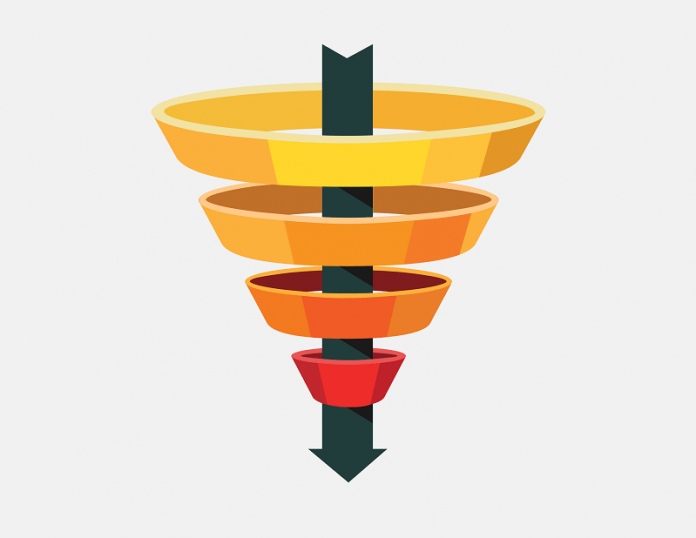By Jenna Cyprus
Marketing principles never change, but strategies seem to change daily. Strategies have to change because traditional sales methods don’t always work online. For example, traditionally, a sales rep qualifies a lead over the phone before giving an interactive sales presentation in person. Online, you can’t personally qualify leads prior to sending them to your sales page. Lead generation occurs digitally; therefore, lead qualification must also occur digitally.
With leads being generated and qualified digitally, sellers lose control over how, when, and where prospects enter the sales funnel. This loss of control generates unqualified leads, which adversely affects the entire sales process.
You need control over how prospects enter your digital sales funnel
Having no control over how or when prospects enter your sales funnel is like delivering your sales pitch to the wrong prospects. For instance, a prospect still in the discovery phase might be directed to a sales pitch only appropriate for someone who’s ready to buy. You won’t get the sale if they feel pressured to make a purchase they never expressed interest in. On the other hand, when you intentionally deliver that same message to a prospect who’s expressed intent to buy, they’ll likely perceive your sales pitch as helpful.
Matching prospects to the appropriate sales pitch requires reaching prospects according to where they are in the buyer’s journey. Reaching prospects where they are is done through inbound marketing.
Inbound marketing gives you more control
Inbound marketing attracts qualified prospects to your website by providing high-value content designed to address the problems and needs of your ideal customer.
In an in-depth article diving deeply into sales funnel mechanics, Bristol Strategy discusses the importance of an inbound marketing sales funnel. According to reports, the number one problem sales reps face is getting a response from prospects. The third most common problem is identifying and prospecting good leads. Inbound marketing addresses both problems by generating warm leads who want to talk to learn more about your product.
Inbound marketing generates better leads through a variety of tactics like blogging, SEO, landing pages, calls to action, email marketing, and lead scoring. As explained in the guide linked above, these tactics, along with several more, make up the inbound marketing sales funnel.
Each inbound marketing tactic corresponds to a stage in the buyer’s journey. For example, blog articles are used to educate prospects in the awareness stage. These people are looking for information and haven’t yet considered making a purchase. Blogs answer questions, establish trust, and address common questions. Emails and lead scoring are used with prospects in the consideration stage. Prospects in this stage are warmer leads because they’ve been qualified. Email marketing supplies qualified leads with more information to make their decision, and addresses any pushbacks.
Statistics prove inbound marketing is effective. According to HubSpot, companies that published 16 or more blogs per month got 4.5 times more leads than companies that published four or less blogs per month. HubSpot’s research also shows only 18% of marketers say outbound marketing provides the highest quality leads for sales. That means 82% of marketers don’t put all their eggs in the outbound marketing basket.
If your digital marketing strategy doesn’t focus on inbound marketing, it’s time to throw some weight in that corner.
Where the rubber meets the road
By now, you probably understand the importance of inbound marketing. If you like the idea but are afraid it will take a lot of work, you’re right. It will take work, and it’s worth it. Here’s some perspective:
Imagine a vacuum cleaner sales rep knocking on your door, requesting an hour of your time for a demonstration you never signed up for. Annoying, right? Imagine you entertain the idea and let the rep in. They demonstrate the product and then ask for your credit card information. If you never expressed interest, you’d be caught off guard and annoyed. If you’re not using inbound marketing, that’s what many of your prospects are likely experiencing and it could be the cause for high bounce rates and email unsubscribes.
Regardless of what you may hear on the internet, marketing is hard work. To implement an effective inbound marketing sales funnel, you need to perform extensive research into each prospect. That means coming up with an intricate system for continually segmenting and re-segmenting leads as they move through the sales funnel. It means determining how you’re going to market to each segment and automating the sales funnel.
Although it’s not a quick process, the time and effort are worth it because you’ll end up with higher quality prospects. Higher quality prospects are likely to say wonderful things about your business to others, and become long-term, loyal customers. In this context, your financial success directly corresponds to how relevant your leads are. Inbound marketing increases lead relevance, so it makes sense to add it to your digital marketing arsenal.
Jenna Cyprus is a freelance writer from Renton, WA who is particularly interested in travel, nature, and parenting. Follow her on Twitter.
Sales funnel stock photo by Bella Melo/Shutterstock







